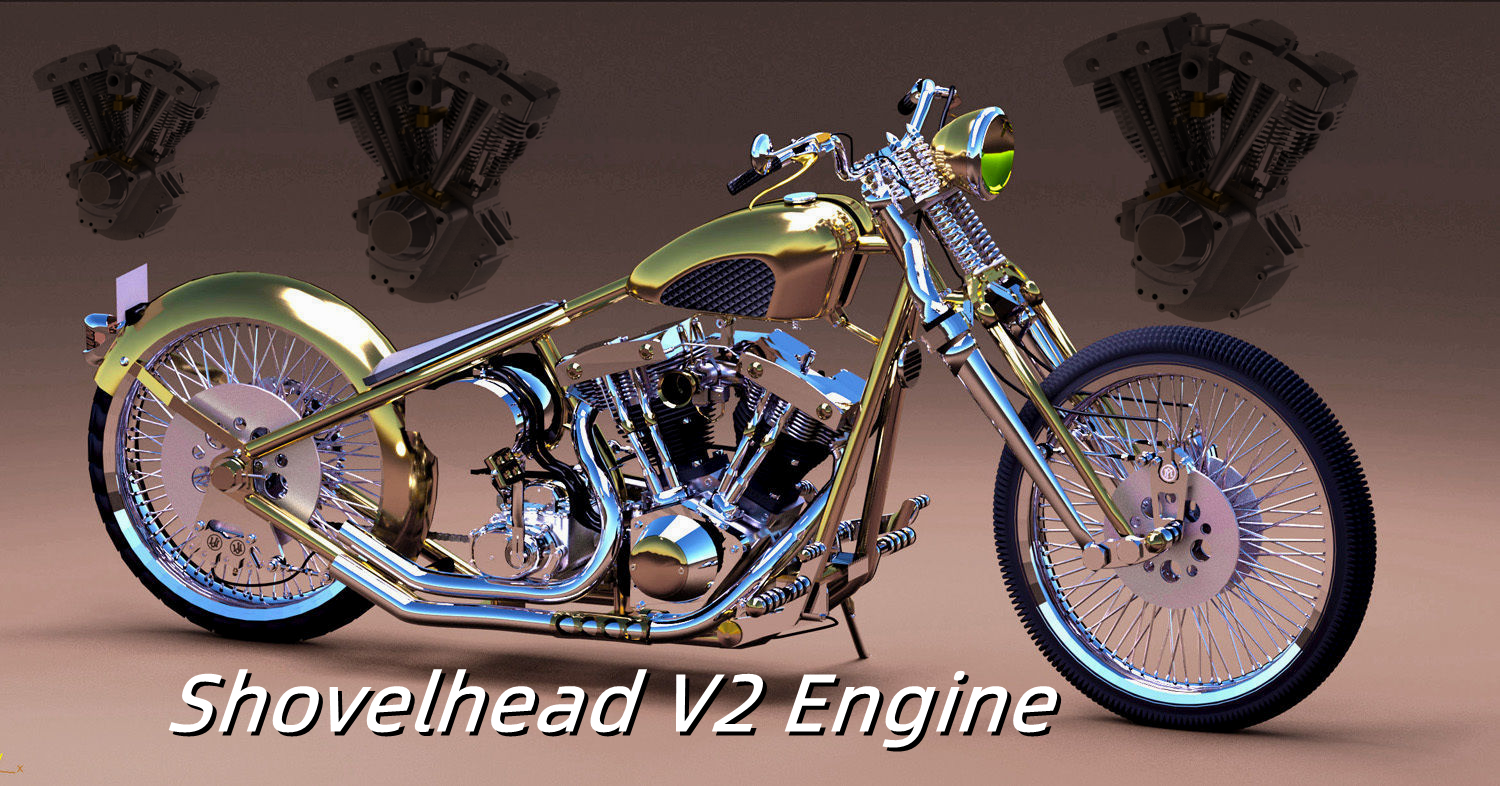
CISON FG-VT157 Shovelhead V2 Engine Building Notes | EngineDIY
In September 2021, our team launched the first miniature version of the CISON FG-VT9 Panhead V2 engine. Once released, it was warmly received, making more engine model enthusiasts know CISON and EngineDIY.
This previous article collected the first model of the Panhead V-twin engine shared by some friends.☞☞☞ 1948 Harley-Davidson Pan Head V-Twin Engine Model | EngineDIY
Our team members are also avid fans of V2 and we have received a lot of sincere suggestions and strong expectations from fans for the second V2 engine. As 2022 draws to a close, we've decided to launch a more classic mini Shovelhead engine model - the FG-VT157 V2, in November. FG-VT157 will be added to the V2 series to make the series an era mark that reappears in the history of motorcycle engines.


Manufactured by CNC process of all metal, the new silver V2 engine comes with the most distinctive feature of the original shovelhead engine. In order to make up for the deficiency of the Panhead cylinder head, we redesigned the cylinder head which adopts a V-shaped valve angle structure and semi-spherical combustion chamber.

We are going to provide something different from the Panhead engine to make it unique and attractive. Instead of designing a 16.7mm diameter, we decided to make a larger cylinder diameter (20mm) with a longer stroke (25mm) and a single cylinder displacement of 7.85ml.
Since the full-size engine is formed integrated and in order to make the installation and commissioning of the engine model more convenient, we decided to change the engine to a split type and chrome-plated rocker chamber cover to make it look cleaner and brighter.

The volume size is the same as the Panhead - which continues the V2 engine series. We paid higher costs using a five-axis CNC machine to process the medium cylinder this time, but it was worth it.
In addition, with the larger displacement, the V2 engine will have a quieter sound and lower idle speed for more stable operation, which will be highly praised for its good performance.

As for the crankshaft, we have also changed some of the design. The previous Panhead engine was an interference fit, which was not easy to install and remove. But here we did it in a new way - copper sleeves were also fitted to the connecting rods to make the engine more durable.

Most enthusiasts would like to have a separate lubrication system, so we left some parts in reserve for later DIY modifications, such as oil holes for the pistons.

We have extended the camshaft for the gearbox lid so that the trigger can be modified in this position for accurate ignition. Of course, the trigger can also be mounted on the flywheel end.

We've heard from a lot of players and we promise the flywheel will not be too big but will be scaled like a real full-size engine flywheel, which is simple and durable. In addition, to make up for the lack of an electric starter for the Panhead v2 engine, we replaced the belt wheel with a synchronous wheel to make it easier for RC players to install the V2 engine on their models. This makes it easier to add an electric starter.

We believe that with the experience of manufacturing the first Panhead V2 engines, the process will be more mature and the manufacturing process will be more convenient when mass manufacturing the shovelhead V2 engines. We also believe that these new engines will be impressive and get engine model fans’ love and praise again.

Very happy to share our engine building notes with you. Looking forward to your suggestions. We will release pictures and videos of the manufacturing process in the future - so stay tuned!


Comments
Leave a comment